TEST SITE FOR ART & HOSPITALITY EXPERIENCES
Interview with Artist in Residence Lena Marie Emrich
11.03.2022

Where About Now Where are you right now? And is there anywhere that you would rather be?
Lena Marie Emrich I am at the BER Airport on my way to Paris. I am feeling quite good. I like these moments of transition, the slow-down before total and extreme mobility. The sun is shining, which is rare in winter. The airport is half empty - somehow I find myself in a relaxed atmosphere. The café is playing some Maroon 5, random mainstream music, I usually enjoy this music only in public places just like in hardware stores.
WAN Among the artists invited to show their work, you were awarded the top prize at the Berlin Masters exhibition in 2020. How has such recognition influenced your practice?
LME It was a combination of two events happening at the same time. I was opening my first institutional solo “Mainly Fair Later” at Kunstverein Göttingen curated by Tomke Braun. It was the first time I created an exhibition filling several rooms - it gave me space to grow and understand my work better. At the same time I won the TOY Award. I am very blessed about all these new long-term relations that have grown out of this unique project: be it getting to know the other participating artists, the curators as well as the amazing TOY Award patrons Monique and Max Burger. I strongly believe that collaboration and honest support is the key to survive the contemporary art world.
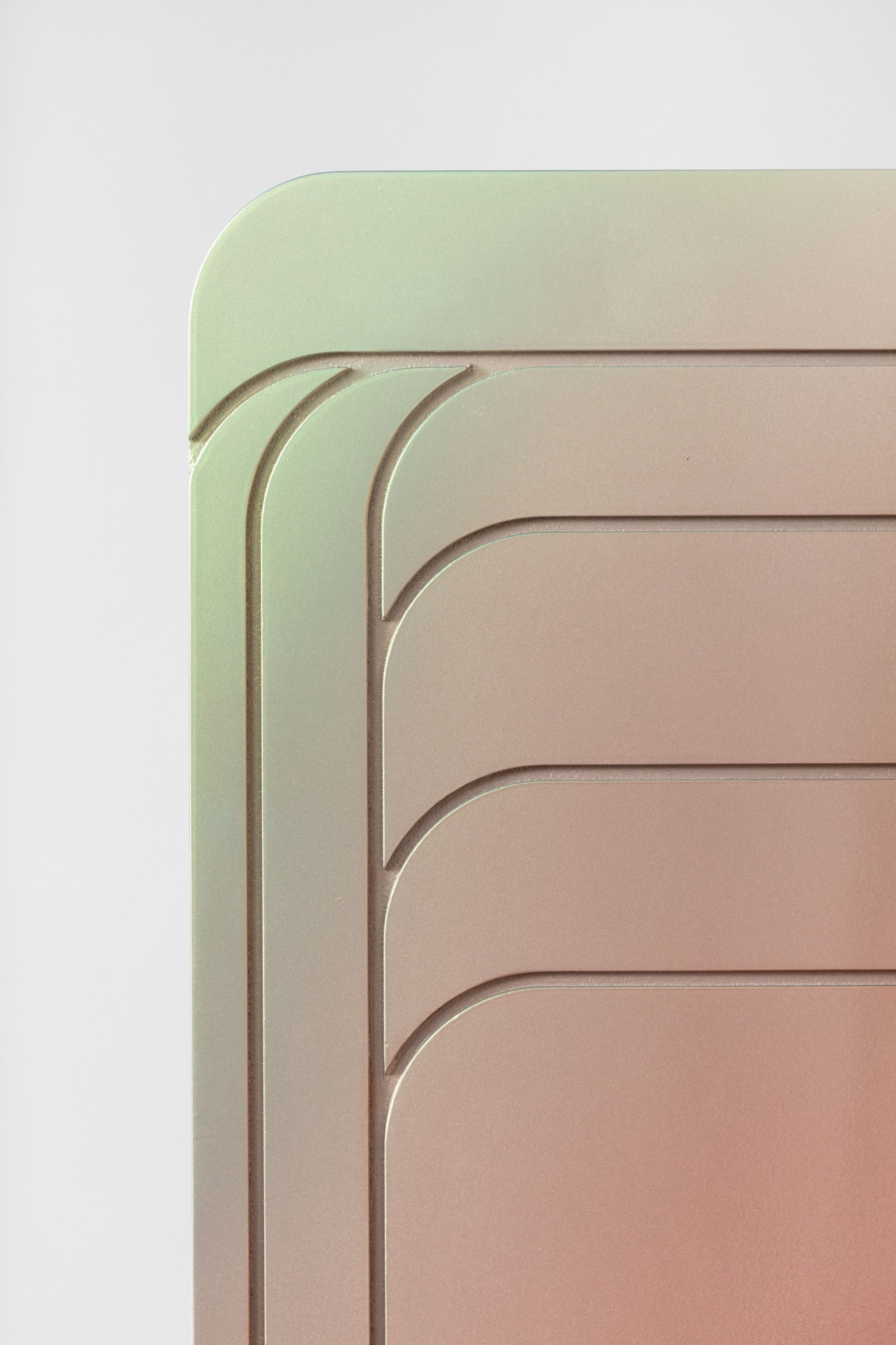
WAN While on an artist-in-residency program in Morocco’s Agafay Desert in 2020, you collaborated with local artisans to produce wearable hydration devices. Each piece you hand-painted in colors that seem to evoke the burnt terracotta sands of the landscape. How do your surroundings in an unfamiliar place dictate your practice?
LME Escaping our everyday habits and rituals is a main principle in my art practice. Not getting stuck in one medium or certain ways of doing things. It is important to open your channels and experience. To reflect a certain facet of society. This is part of the obligations we have as contemporary artists - to open up the view on curiosities and sentiments surrounding us. It can be the discussion you have with a stranger in a bar next to the train station at night, the knowledge of a former sailor who then specialized in metal welding or the car mechanic next to your studio passionately tuning the same car for twenty years. Sit down. Take a rest. Contemplate. Let things flow. Be patient, when you have the urge to be the opposite.
WAN What was it like being so far removed from the major tourism hub that is Marrakech?
LME There is this weird attraction humans tend to have to deserted landscapes. I think it sharpens your senses. Nature stripping down to its essentials. Everything seems to be in its purest form - be it the gradation of the sky unfolding all its range of color in front of you (first time I understood Ed Ruscha’s gradients…). Or the layered stone casually showing off the endless decades he is carrying within the fine lines marking the canyon. Your inspiration is adapting to the area, becoming innocent again.
WAN Has your work taken you to any other particular destinations of note?
LME Last April I spent some time in the northwest of Iceland going to the other extreme: an icey stone desert. I ended up creating sculptures out of aluminum collaborating with a former sailor who retrained to become maybe the most talented welder I have ever met. It is not only the special places we escape to - it is the urge for new collaboration and the openness we gain when we are in a strange environment. Casting off the shackles of our daily routines.
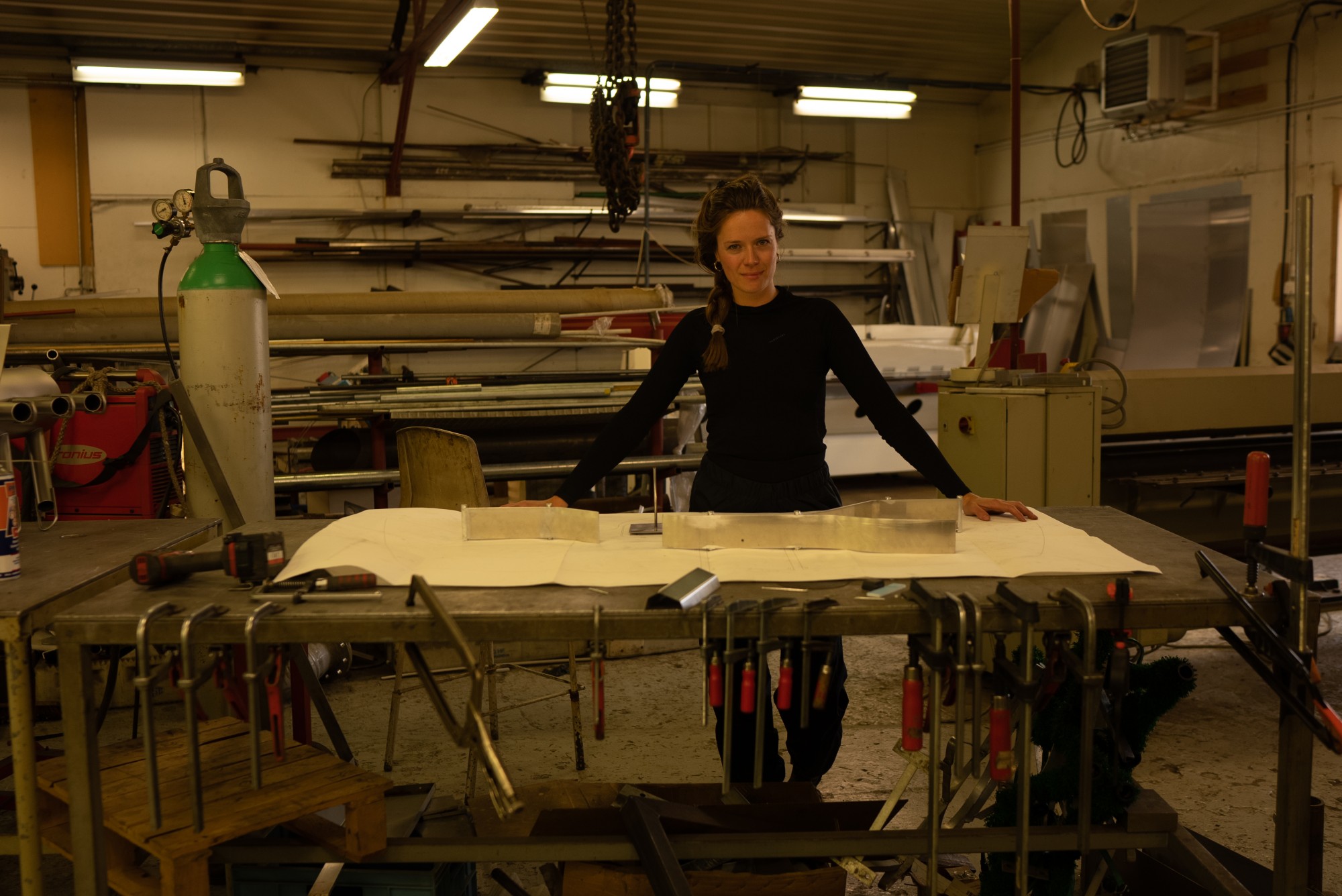
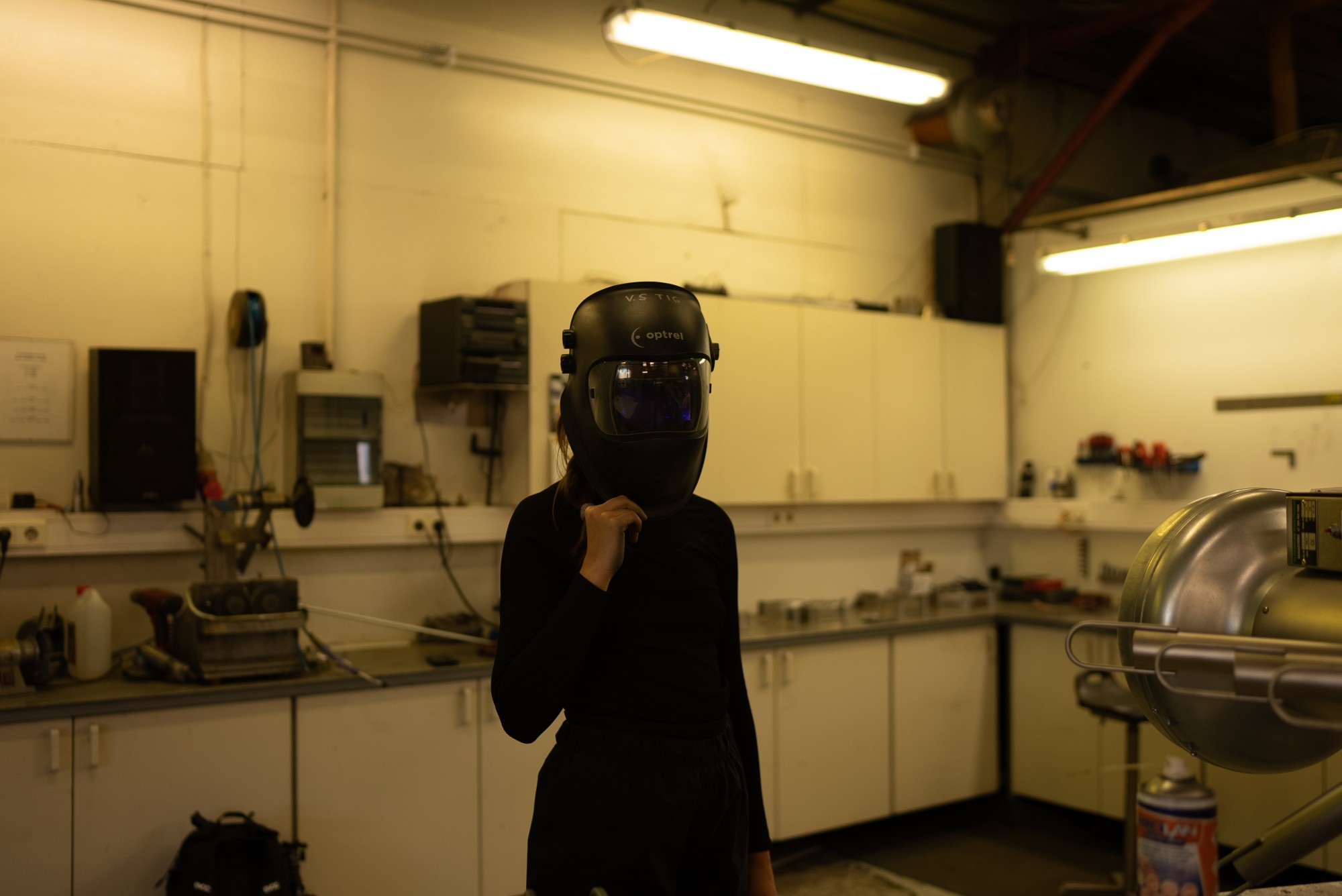
WAN You have previously referenced car tuning races in your work. What is it about the lure of the motor vehicle? Does it promise unbridled freedom for you? Think the all-American road trip, leather-clad bikers and Hollywood’s Fast and Furious.
LME “The car as a symbol of progress, of modernity, of our society drifting into individualism. The car as an aesthetic icon. The car as a status symbol. Shelter. Driving a car as a pop culture moment. The car as a slogan. Ultimate expression of freedom. The phantom pain of the car industry as an indicator of economic health. The car as a destroyer. As a collective projection screen. The car as the limit, where the freedom of the individual means the bondage of the many. The car as a contradiction. The car as a promise of the sharing economy. Swipe right to open. Anytime. Anywhere. The car as a symptom.” Linus Lütcke once wrote these lines for a performance of mine called “A total burn out”. I really like the dynamics of his text. The car can be seen as a projection of society in certain ways. It is an allrounder, a good artistic playground. Friendships have been built. Since 2018 I am working together with the car racer, Andrius Raisig, I have learned a lot. Most of all, I am fascinated by his passion for endless tuning. It's a continuous movement and not a deadline under pressure. I started with a video work, but once I get into a specific subculture, I have the tendency to get lost in it. I love material research and the tuning world seems like a bottomless pit. I simply started to adore it.
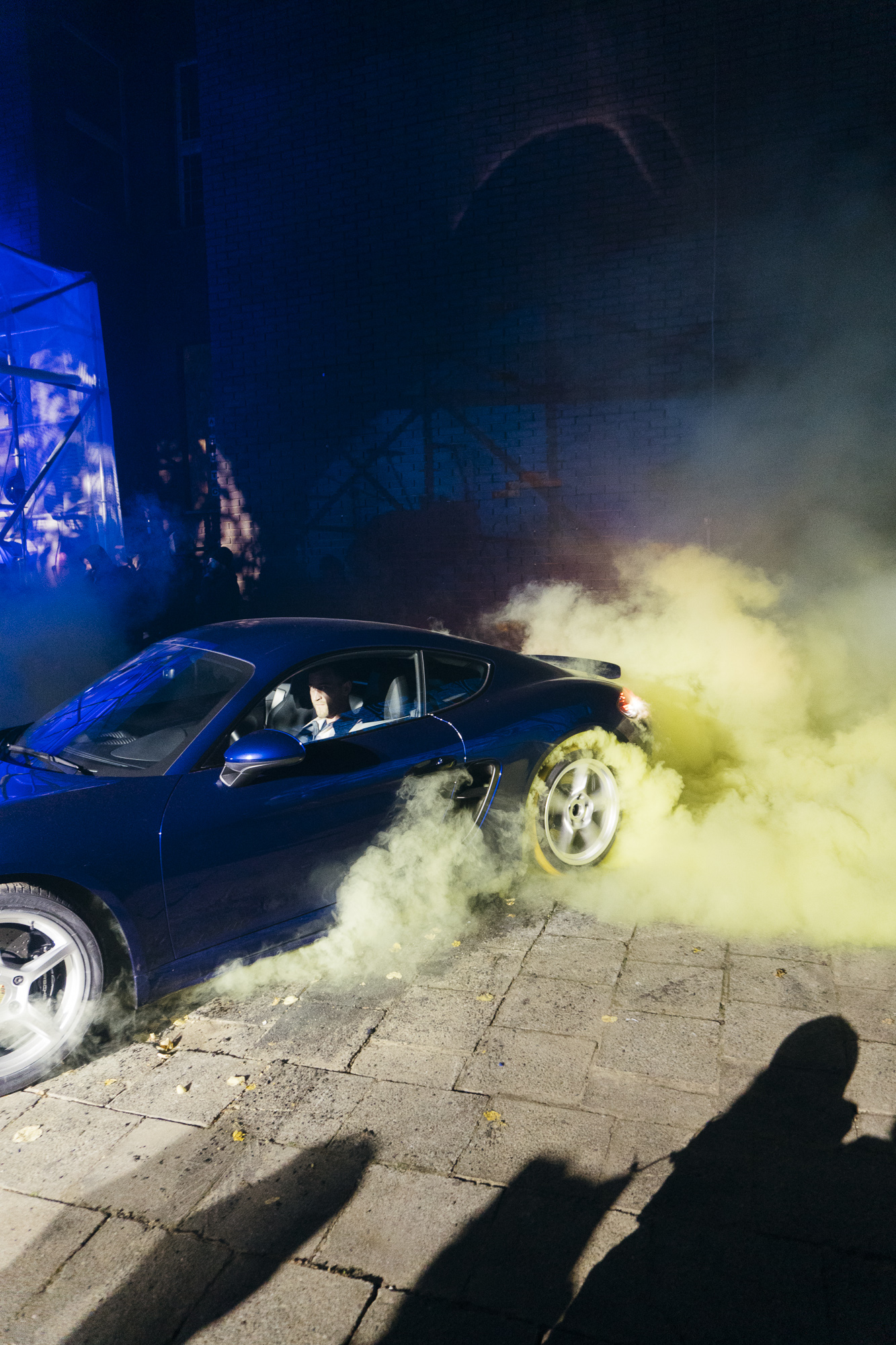
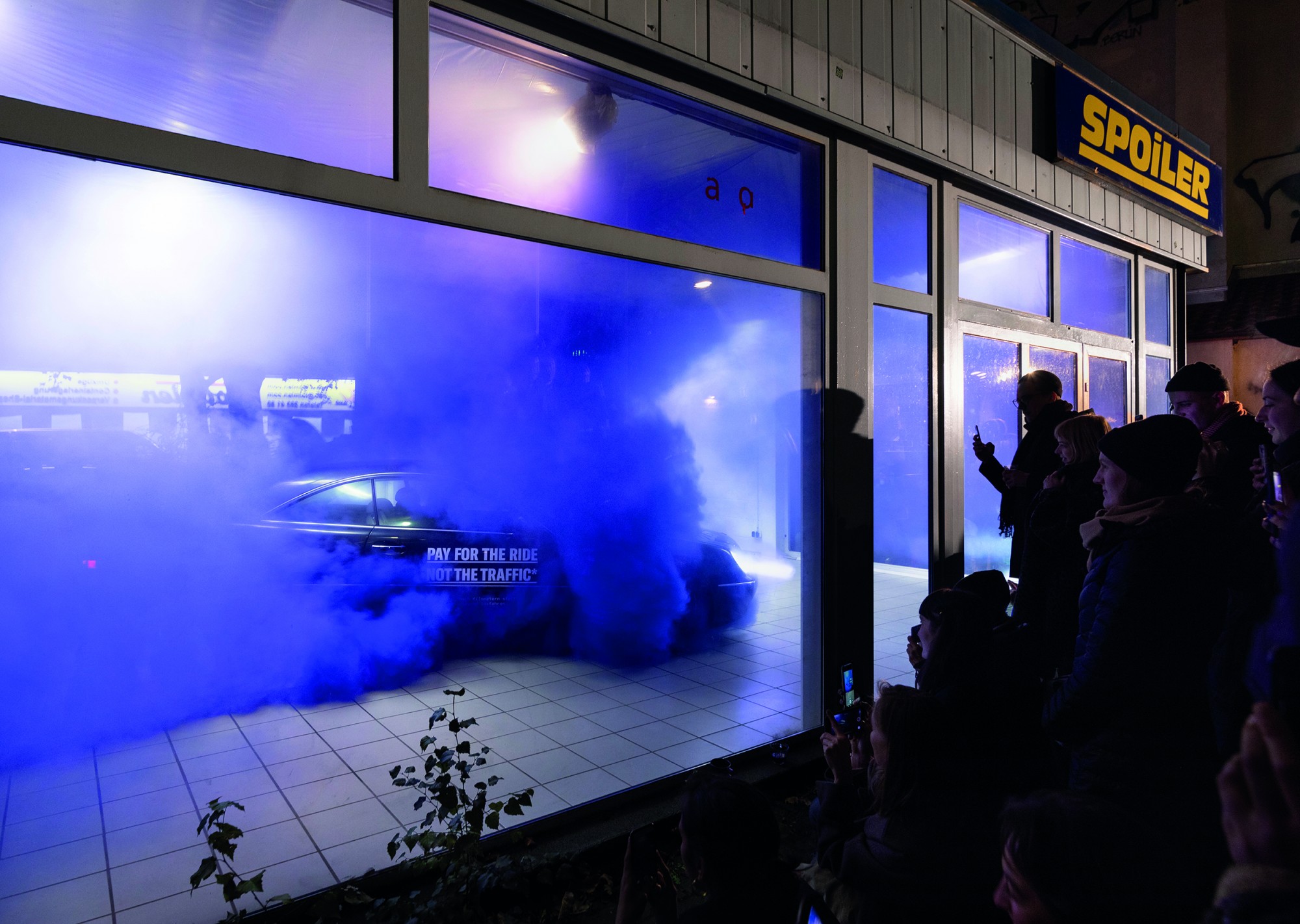
WAN You have previously embossed some of your sculptures with the same chameleonic paint used for cars. What visual or perceptive effect do you wish to achieve as the viewer’s meanders around these works?
LME The sculptures I create normally relate to an organic movement. Be it drying your hands in a public toilet. Now, in the art context, you still sense the movement that you once experienced. The sculpture is hanging on a traditional center height of 150 cm. The chameleon paint reflects the light and varies. It makes you want to move switch angles. You start wondering around the alienated everyday object. Through the moves driven by curiosity, you create a new intuitive relation to the object in front of you.
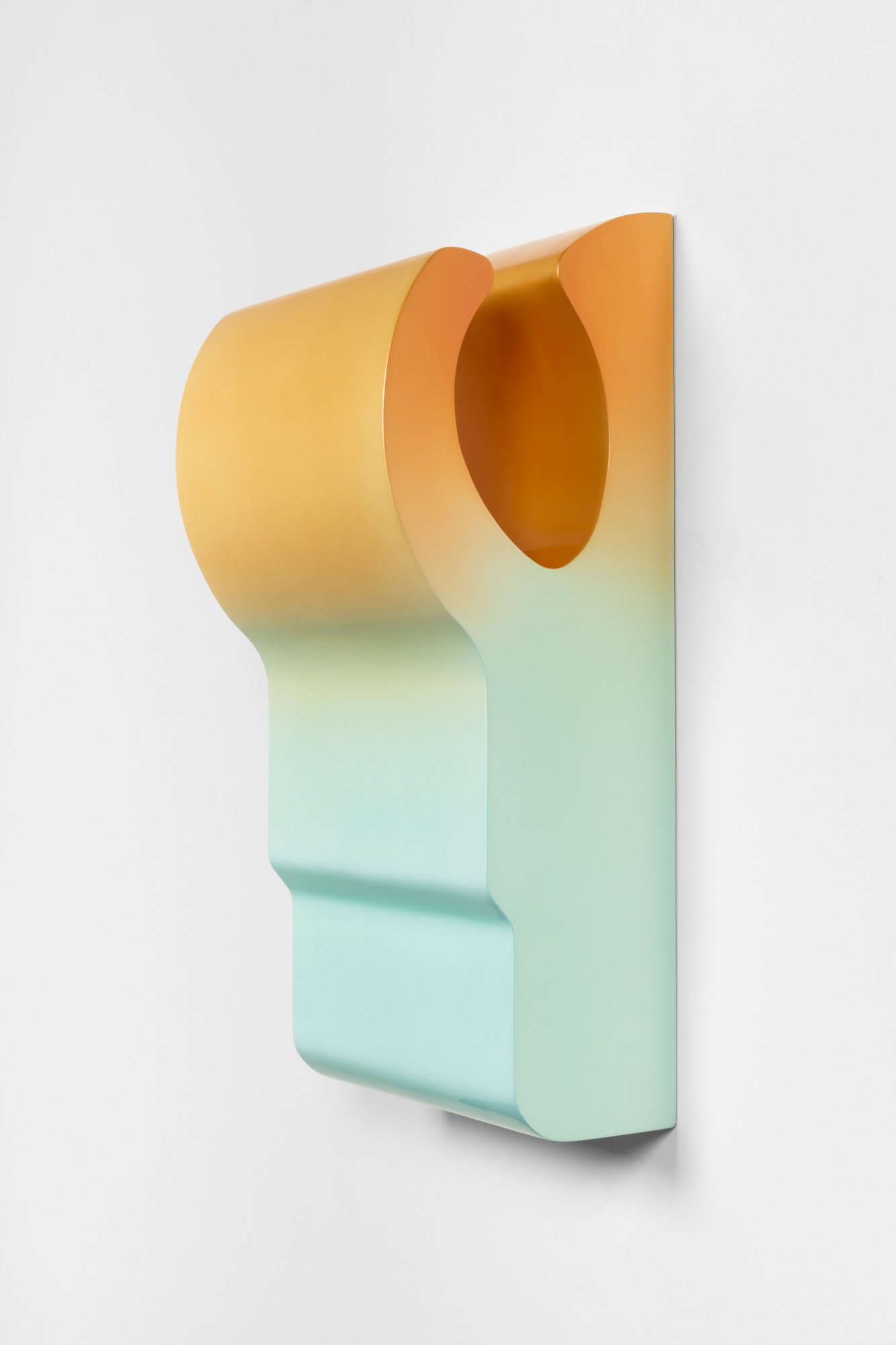
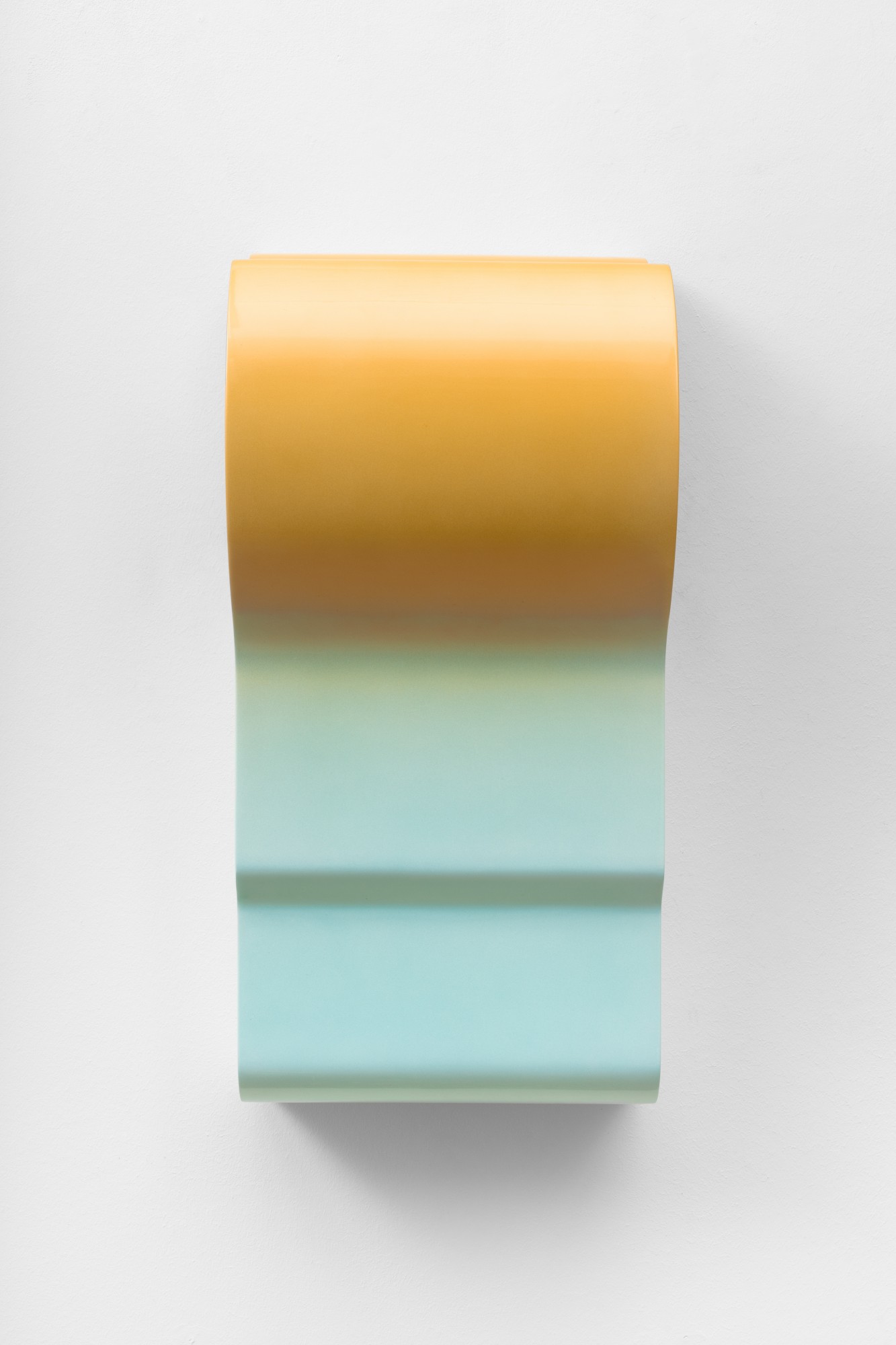
WAN You endow these sterile manufactured surfaces with traces of human presence. I am referring to your complimentary Scattering Skies and Golden Hours series of airplane windows from last year. From the smudged fingerprint and impression of a forehead pressed against the glass, you add the human drama of take-off. Can you tell us more about it?
LME The trace functions as an activator of sentiments within the observer. We all have our own airplane memories. Be it the kid pressing the nose against the window or a businessman next row leaning his head against the surface to do a 15 minute power nap.
WAN You etched a rough outline of what appears to be a map on one of the window panes. It is unrecognisable at first glance but did you have any particular location in mind?
LME By using only the outlines of the causal body fat prints a certain abstraction is given: some people see country borders, others see cyclones moving over a weather map, others imagine ice crystals growing in between the layered glass. The answer lies within your own imagination.
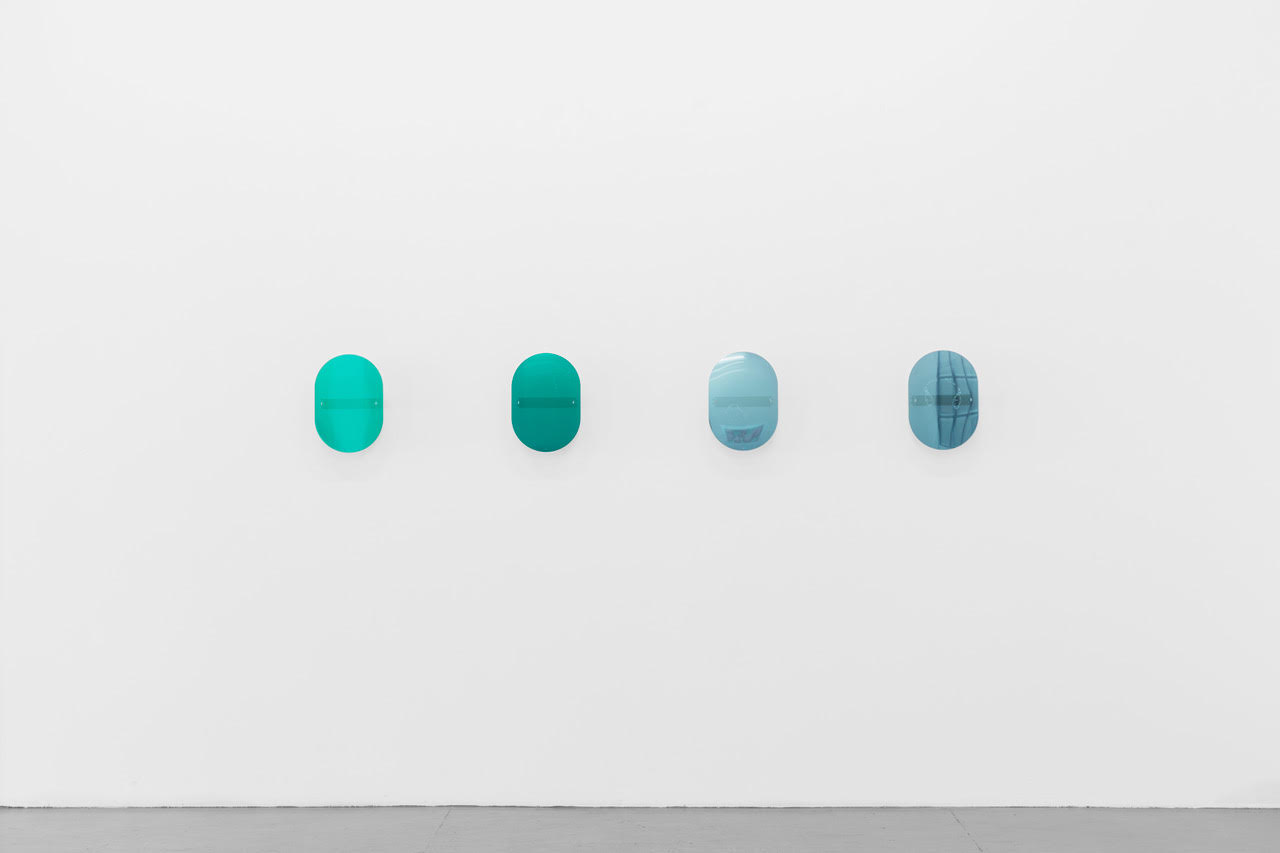
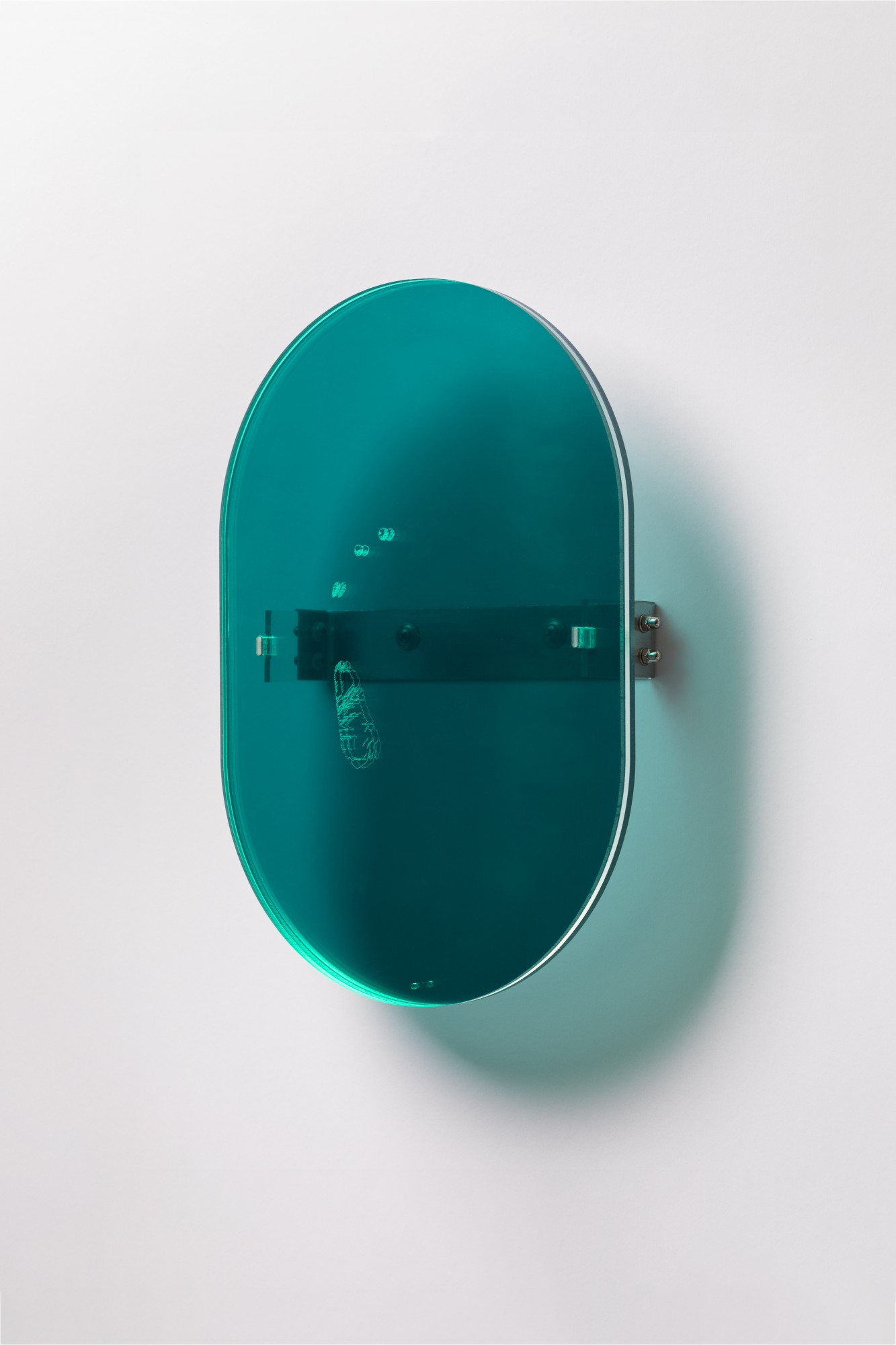
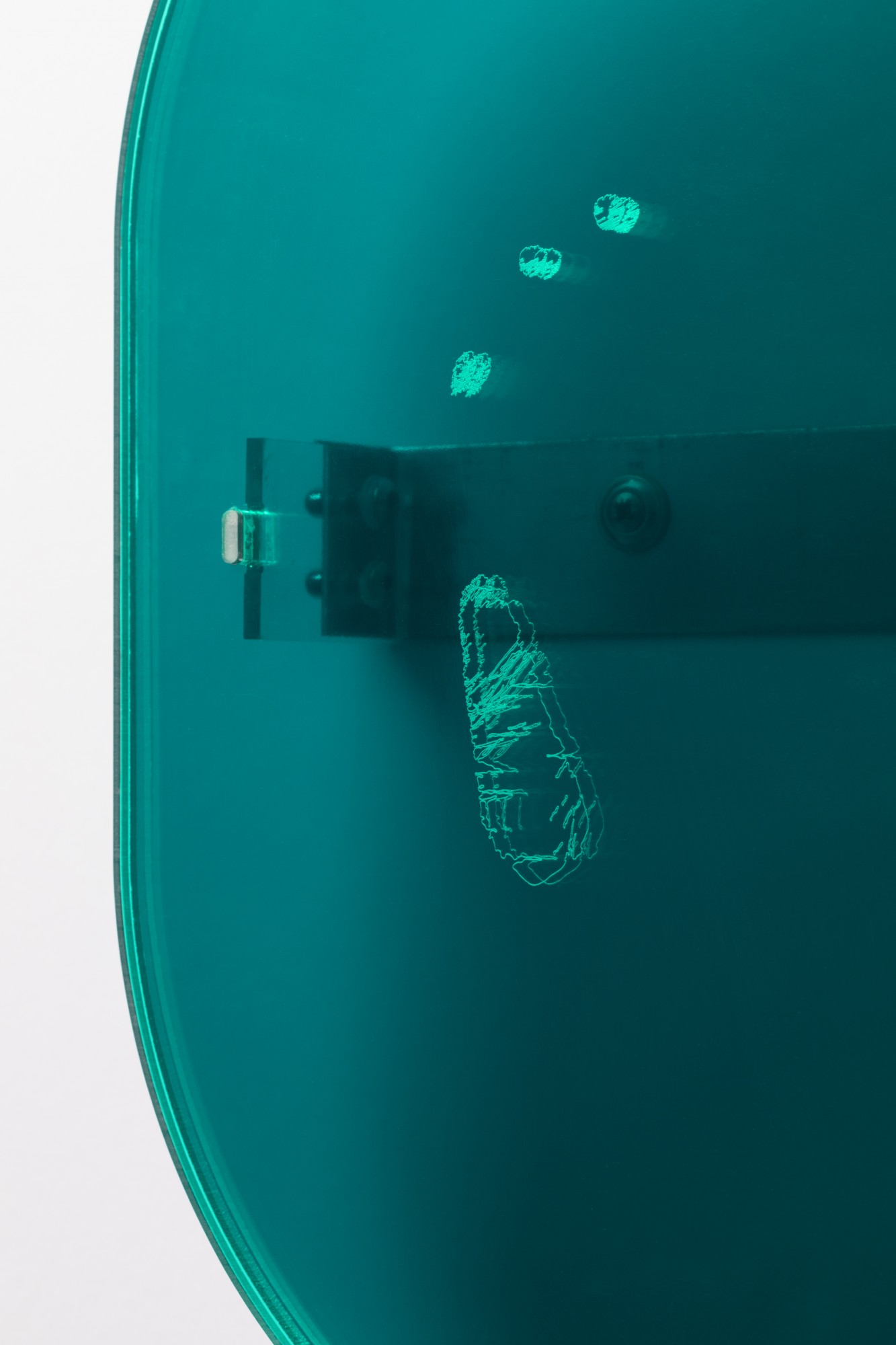
WAN Never Fight the Current, your most recent solo exhibition, has just wrapped up at Office Impart in Berlin. You included sculptures which explicitly reference the dreaded box of constraints for hand luggage, commonplace among budget airlines. Could you speak about how the idea came to mind?
LME The whole exhibition starts with the idea of how we sense time. Through the pandemic we have a new sentiment towards time, we are trying to be more conscious, we are forced to slow down, but the moment things are in flow again, we all lose the consciousness we earned again and we speed up maybe too fast. This exhibition is focussing on micro moments of slowing down in everyday life. The work you are referring to is called “rules don’t apply to me”. The objects you normally find in airports: we all know this feeling of queuing to enter the airplane. It is a moment before total mobility. We will be flying hundreds of miles in a very fast time. But before you are standing still. We get this anxiety of: does my backpack fit the regulations of the airline? You have to take a deep breath, gather your artificial fear and then we take off.
WAN You also debuted your new series called Meanwhile evaluating doubt with our elbows which takes, as a starting point, the transparent dividers that nowadays demarcate the spaces of taxi driver and passenger for the protection against infection. How has the ongoing pandemic shaped your practice beyond such subject matter?
LME In my art practice I like to embrace collective feelings and changes that come along with it. The pandemic and specifically the loss of touch will form and change how we interact with strangers forever. This series might be monumental in the future, reminding us of this time or maybe these objects will last and just melt into our everyday life. We don’t know yet. I like this tension connecting the present with the upcoming.
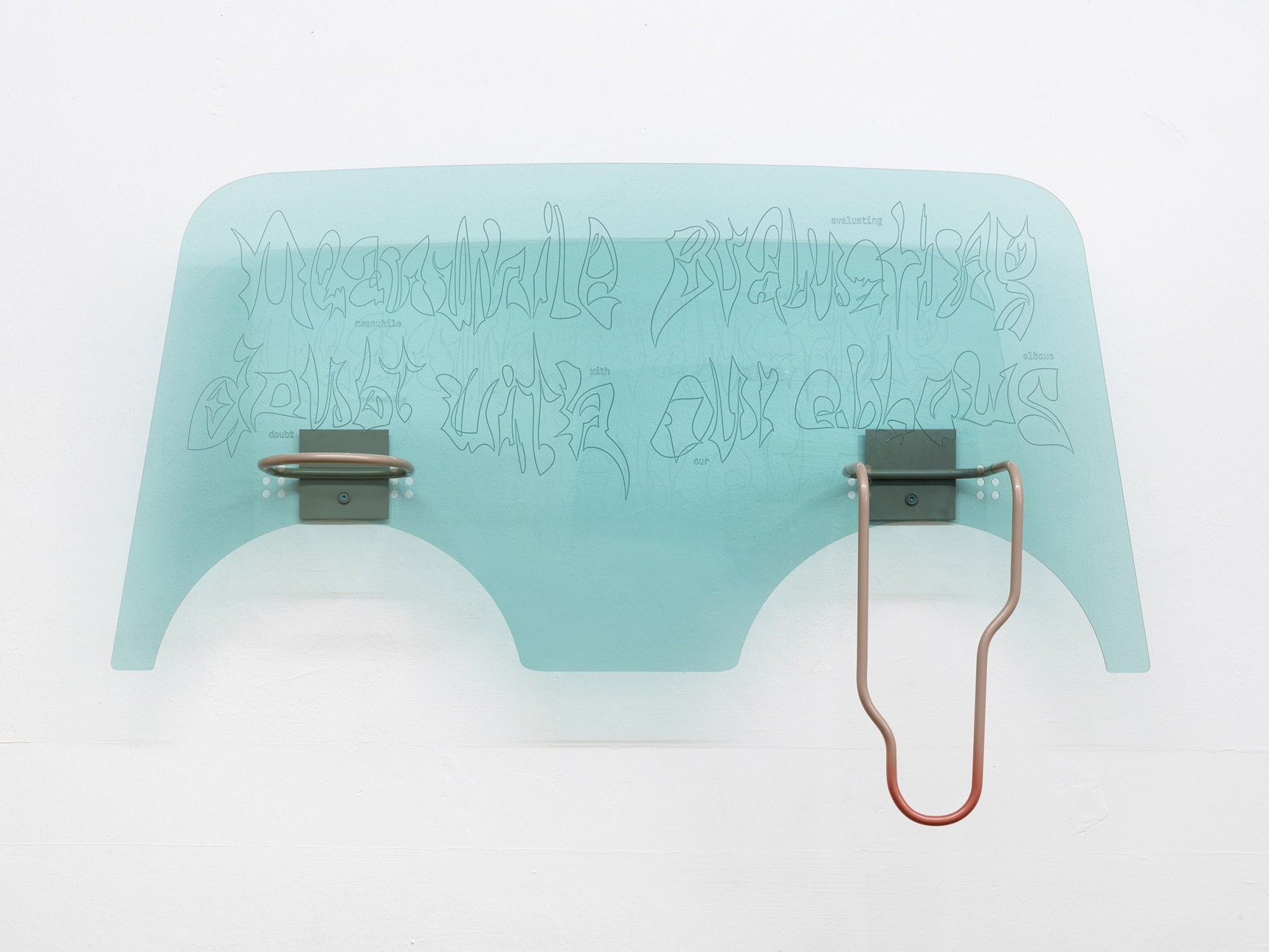
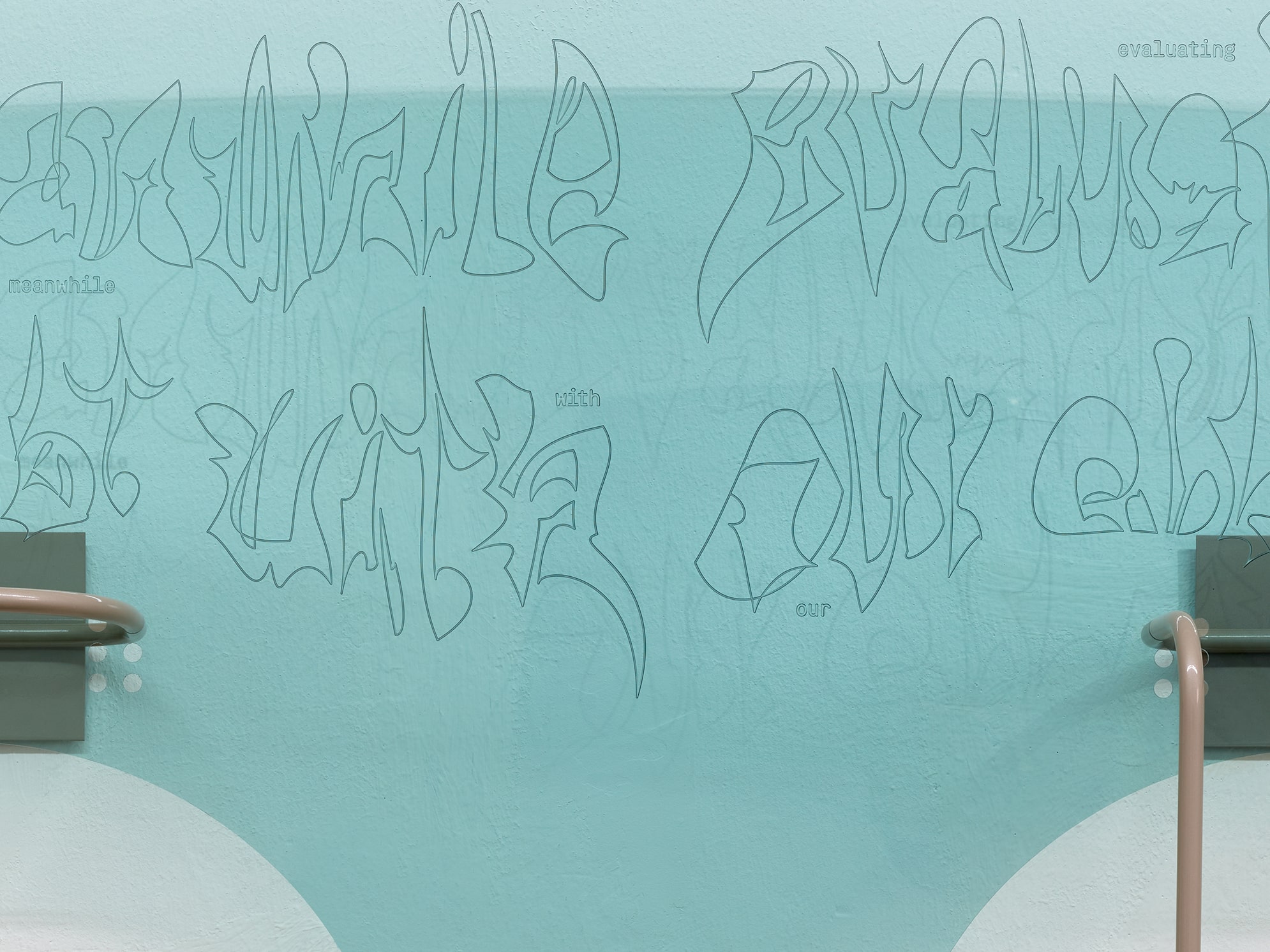
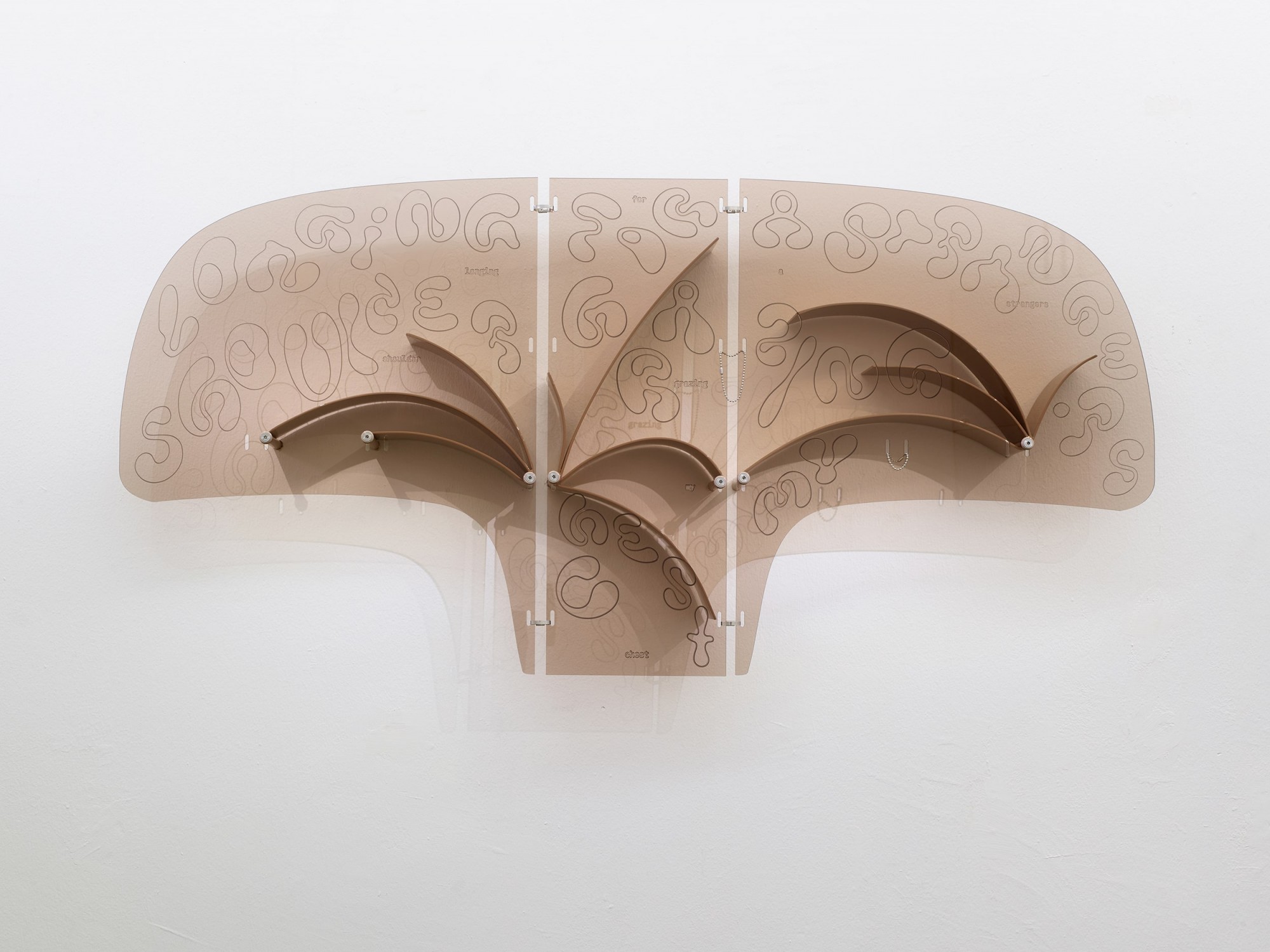
WAN You have inscribed poetic lines such as a ‘longing for a stranger’s shoulder grazing my chest’ onto the plexiglass. Are these traces of human interaction a nostalgic lament for time past or a promise for a post-COVID future?
LME For me poetry is the essence and root of thoughts. In general, it is the starting point when I begin a new project. It can be seen as a playful deconstruction of language, a natural opener to new ideas. The three sculptures all embody their own engravings relating to the desire for human touch. And this desire is timeless.
WAN If given the opportunity, where would you like to travel to next?
LME This weekend we are spending time at the main train station not to depart but to welcome the people who arrive. There are hundreds of Ukrainian people arriving every day. Volunteers are still welcome.

